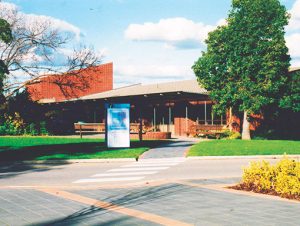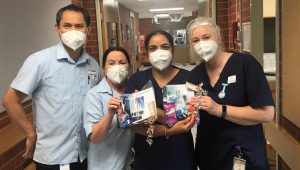Helen’s first shift caring for spinal injury patients began at the Morris Hospital, when it was surrounded by paddocks and adjacent the Metropolitan Infectious Diseases Hospital in Northfield.
Forty-five years later, her final day in the spinal unit will be spent transferring patients to the new state-of-the art facilities at the Repat Health Precinct.
In that time, both hospitals have amalgamated to become the Hampstead Rehabilitation Centre, dozens more buildings and services have been added and Helen’s contribution to spinal injury nursing and her care for patients has been recognised with several awards.
“I’d been overseas and moved to Adelaide from Gladstone when a friend suggested working at Infectious Diseases Hospital,” the enrolled nurse recalls.
“My first 12 months were spent on a geriatric ward and infectious diseases ward.”
In 1977, she relocated to the Morris on “the other side of the paddock”.
She says working alongside her statewide spinal injury colleagues and caring for her patients when they are at their most vulnerable count among the high points of her career.
“The people I work with and the patients I look after are what I’ve loved the most,” she says.
“Patients with a spinal injury spend a long time in hospital so you get to know them and their families and ride this weird journey with them.
“Their world has been turned upside down in the blink of an eye.
“I’ve laughed with them, I’ve cried with them and I’ve shared the joys and sorrows with them.
“Some of the patients have really stayed with me and it takes a long time to get them out of your system.”
In 2016 the SA Governor presented her with ParaQuad SA’s President’s Award for her contribution to the spinal unit.
Now 70, Helen will wrap up her long career when the spinal unit relocates to a purpose-built facility at the Repat next week.
On Tuesday, South Australia’s spinal cord injury and brain injury rehabilitation services, currently based at Hampstead Rehabilitation Centre, will be relocated into a new 48-bed facility at the precinct, along with a rehabilitation gymnasium, café, town square and other health services.
About 280 existing and newly recruited staff will also be relocating.
“I ride a pushbike to work as I don’t drive, so if the service wasn’t moving, I would have continued to work and gradually reduce my hours.
“I still enjoy lighting up the lives of the patients – if I can make one of them laugh or smile every day, I’ve done my job.
“I will get into volunteer work once I get my head around retiring.
“I have been blessed with good health, so I’m sure I’ll find some sort of niche.
“And I will visit the Repat occasionally and see how the little gems are doing without me.”
She’s confident patients will benefit from the relocation to modern facilities. “It’s ground level, they will be able to get outside in fresh air and have lovely views of the garden.
“Having their own personal shower and toilet will be a good thing for them too.”
The facilities were co-designed by Central Adelaide staff, patients and their families to ensure the new location supports therapy, wellbeing and recovery.
The move has been 12 months in the planning, incorporating transportation and logistics, with ongoing consultation from clinical staff including medical leads and nurse unit managers, says Alycia Pollifrone, Nurse Consultant – Safety & Quality, Neuroscience, Rehabilitation and Specialty Medicine 2, at the Central Adelaide Local Health Network.
“The removalists have started moving furniture, computers and printers, our outpatient services are packed up, and our inpatients move next week, so all our patients are getting packed up too,” she says.
To prepare for the move, staff orientation site visits have been underway for the past three months. The first patient will depart at 8am on Tuesday, with the remaining to be transferred at scheduled intervals through the day.
“It will be all hands-on deck with people at both sites including extra nurses and doctors and administration support.”
The presence of COVID-19 in the community had presented many challenges for the relocation project.
“We’ve been doing lots of contingency planning to account for whether we have a COVID positive patient.
“The new ward areas are looking amazing, and we are so excited for the patients to have their own rooms and ensuites in rooms that are double the size.”



